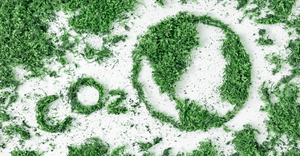Surviving Super-Sized Sandy
Planning ahead of a natural disaster is the key to successful operations in its wake.
December 23, 2012
By Matt Gartner, XL Specialty Insurance Co.
Sandy was quite a storm. Dubbed a “Superstorm,” it was a hurricane that merged with a winter storm to create one “super-sized” system that brought storm conditions to the entire eastern seaboard, including blizzard conditions in West Virginia and nor’easter/hurricane conditions everywhere else.
For waste firms in the region, Sandy brought two challenges – first, trying to make a quick recovery from any disruption in service, and second, assisting in the challenging clean up.
Due to flooding in its regional headquarters building, Progressive Waste Solutions, which services the greater New York area, reported how it temporarily ran its operation out of a hotel in nearby New Jersey. While its second floor office space didn’t sustain flood damage, damage to the first floor kept the waste firm and other tenants out of the building for days immediately following the storm. In addition to office displacement, the firm, like many area waste firms, also had to contend with power outages and fuel scarcity. From its temporary offices, they were staffing up, bringing workers and equipment from other locations to meet demand in the Northeast. Despite their business disruption, this waste firm was able to carry out its obligations and take advantage of additional storm related work, undoubtedly as a result of their advance emergency preparedness planning.
As with most natural catastrophes, Superstorm Sandy has highlighted the critical nature of preparing for and responding appropriately after catastrophes. Especially for waste firms, preparing and reacting effectively during times of crisis will protect key resources, restore operations quickly and lead to not only financial recover but operational recovery that allows firms to take advantage of new opportunities presented by storm cleanups.
Certainly after an event like Sandy, many businesses made the call to their insurance companies to get started on their post-Sandy recovery. What they could have considered and might want to consider now, is making another phone call to their insurance companies or brokers to see how they can minimize risks associated with clean up from this storm and how they can be better prepared for the next one. Waste companies in the region are keeping very busy, and will be for quite a while, facing months of difficult collection and disposal work. Now, to keep pace with the need for their services and keep their workers safe while doing it, waste companies are wise to reach out to their insurers to help them understand their own insurance coverage more clearly and take advantage of the advice, guidance and other services available to them to make sure that they are managing their risks appropriately as they clean up after this storm and others. Everything from ergonomics training to guidance on protecting workers from mold or hazardous waste exposure will help keep Sandy’s clean up activity from generating additional insurance claims, lost profitability or injury to their workforce.
Businesses are wise to brush up on the details of their insurance coverage, and learn a little more about what risk management resources may be available to them. Insurers offer a variety of loss prevention, training and risk engineering services to help clients to take preventative actions to minimize risks and financial losses that can result in the event of a natural disaster. Property insurers often employ risk engineers who can provide wind analysis to test how a facility will fare in sustained high winds, or flood prevention advice. An insurer’s loss prevention experts review a client’s facilities and look at ways to better protect property. Proactive changes could be a simple change to store supplies on site that would prevent damage in a flood surge to a modification the loss of a roof in a hurricane.
After incidents like last year’s tsunami in Japan and floods in Thailand, many insurers are also looking at ways to help clients take preventative measures to secure their supply chains and avoid possible business disruptions. Similarly, environmental insurers offer training and guidance on everything from hazardous materials handling to waste disposal contract reviews.
Adopting strong loss prevention measures before, during and immediately after a natural disaster positions waste firms to take on the business opportunities presented by a storm like Sandy without exposing their operations and employees to additional risks. For waste firms, it offers not only a business opportunity but a chance to help communities, families and businesses discard Sandy’s aftermath so that they can move on and rebuild.
Tips on Filing Claims
In the event of catastrophe-related claims, businesses, of course, should contact their insurance companies to give notice. New York-based Insurance Information Institute (www.iii.org), also known as the Triple “I”, offers valuable tips on how businesses can respond quickly to minimize their losses and work with insurers to ease the Sandy claims process, including taking steps to secure damaged property to prevent further damage and reduce the time it may take to restore it to carefully collection of business records which is vital to proving the value of damaged equipment, inventory or structures as well as loss of business income.
You May Also Like


